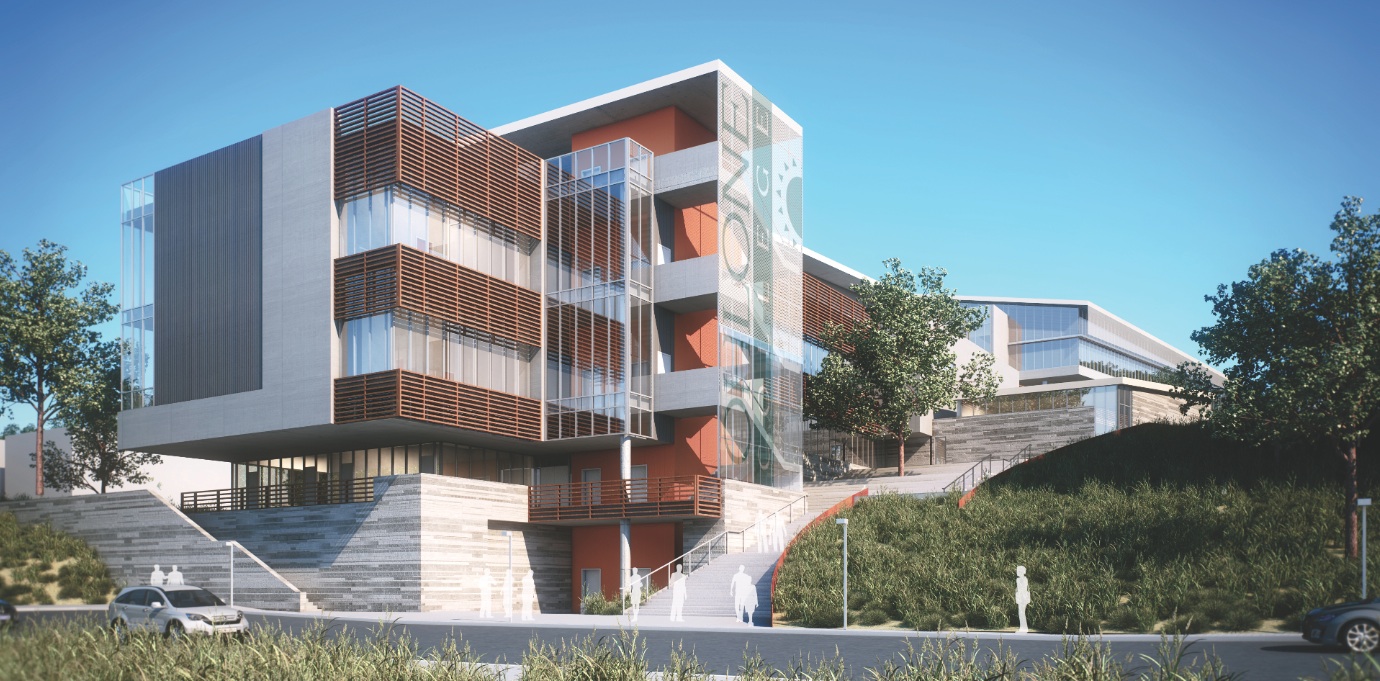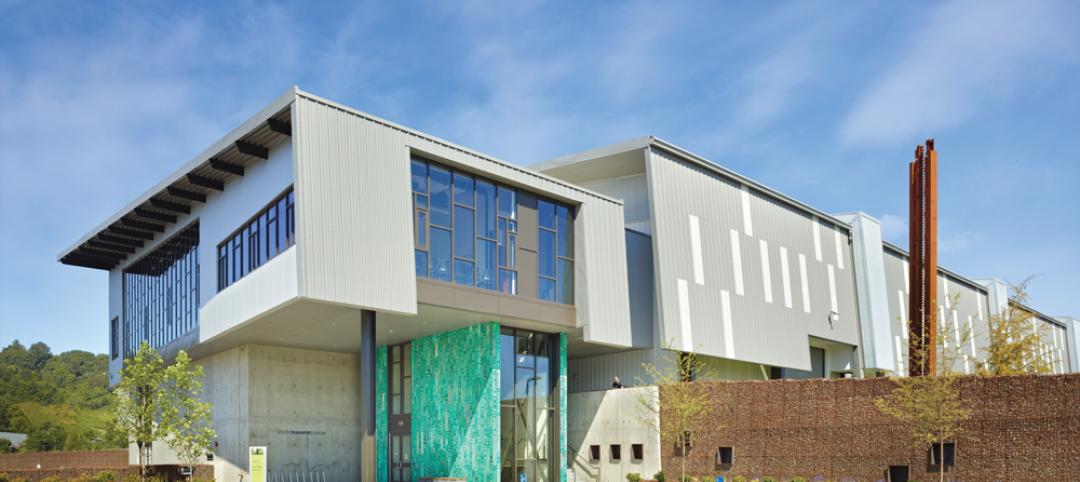This year marks the fifth anniversary of the American Institute of Architects’ effort to have architecture firms voluntarily pledge net-zero energy design for all their buildings by 2030. The AIA 2030 Commitment encourages design professionals to strategically reduce the measured energy consumption in new and existing buildings they design.
The 2030 Commitment is “an effort to get a firm’s complete body of work channeled toward carbon-neutral design,” says William D. Sturm, AIA, LEED AP, Principal at Serena Sturm Architects, Chicago, and Chair of the AIA National Committee on the Environment.
The pledge follows the 2030 Challenge issued in 2007 by Edward Mazria, FAIA, Founder and CEO of the nonprofit organization Architecture 2030, who called for the global building community to:
• Design all new buildings and major renovations to meet an energy consumption performance standard of 60% below the regional (or national) median for that building type.
• Renovate an equal amount of existing building area annually to meet an energy consumption performance standard of 60% below the regional (or national) median for that building type.
• Increase the fossil fuel reduction standard for all new buildings and major renovations in five-year increments, to reach carbon neutrality by 2030.
Last year, in its third annual 2030 Commitment progress report, the AIA called the program a roadmap for firms to transition to the ultimate goal of carbon neutrality on every project in their portfolio—not selectively targeting high performance for certain clients, or designing net-zero projects solely for clients who want it and can afford it, but achieving targeted performance goals on every project.
While there has been an increase in professional activity among medium and large firms, says Sturm, the 2030 goal may be out of reach for many smaller firms, which cite concerns over the amount of time and effort required to report on 2030 goals, as well as the lack of or access to data.
The AIA says that by the end of 2012, 241 firms had signed on to join the 2030 Commitment, with 110 of them submitting an annual progress report. These included such marquee names as CannonDesign, HOK, NBBJ, and Skidmore, Owings & Merrill, as well as midsize practices like Sturm’s own firm and Kaplan Thompson Architects, Portland, Maine.
A more recent summary on preliminary data from 2013 reporting presented at the AIA National Convention this past June showed 275 firms participating in the pledge; 79 of these had submitted data for 2013 on a total of more than 1.6 billion sf of work, reported Nootan Bharani, AIA, LEED AP BD+C, CEM, Lead Design Manager at the University of Chicago’s Place Lab, and Steve Kismohr, AIA, Senior Technical Manager at the Midwest Energy Efficiency Alliance.
The average predicted energy use intensity (EUI) reduction for 2013 from the 79 reporting firms was 34%, a slight increase from the average prediction for 2012. Around 7% of the gross square footage that was reported had reached the 2030 goal of 60% EUI reduction.
Sturm says that it is important for architecture firms to be prepared as more and more legislative bodies and standards organizations call for net-zero and carbon-neutral projects. Earlier this year California began implementing its revised building codes known collectively as Title 24, which call for all new residential and commercial construction in the state to achieve net-zero status by 2030.
Individual cities and institutions of higher learning have also embarked on 2030-type initiatives. The Royal Architectural Institute of Canada has issued a pledge to reduce greenhouse gas emissions in building construction and operation 70% by 2015, 80% by 2020, and 90% by 2025, to arrive at carbon neutrality by 2030.
William Leddy, FAIA, LEED AP, Founding Partner of Leddy Matum Stacy Architects in San Francisco and an Advisory Member of the AIA National Committee on the Environment, says “it just makes good business sense” for the architecture community to prepare for what he calls the “coming new realities” of the profession in the 21st century.
Related Stories
| Jul 18, 2013
Top Federal Government Sector Architecture Firms [2013 Giants 300 Report]
HOK, SmithGroupJJR, PageSoutherlandPage top Building Design+Construction's 2013 ranking of the largest federal government sector architecture and architecture/engineering firms in the U.S.
| Jul 18, 2013
Top Government Sector Construction Firms [2013 Giants 300 Report]
Clark Group, Turner, PCL head Building Design+Construction's 2013 ranking of the largest government sector contractors and construction management firms in the U.S.
| Jul 18, 2013
Top Government Sector Engineering Firms [2013 Giants 300 Report]
Fluor, URS, AECOM top Building Design+Construction's 2013 ranking of the largest government sector engineering and engineering/architecture firms in the U.S.
| Jul 18, 2013
Top Government Sector Architecture Firms [2013 Giants 300 Report]
Stantec, HOK, HDR top Building Design+Construction's 2013 ranking of the largest government sector architecture and architecture/engineering firms in the U.S.
| Jul 18, 2013
GSA regains stature under Tangherlini, who looks to trim its holdings, cut energy costs [2013 Giants 300 Report]
Over the past 15 months, Acting GSA Administrator Dan Tangherlini has done a creditable job of restoring the agency’s standing with Congress and the public.
| Jul 2, 2013
LEED v4 gets green light, will launch this fall
The U.S. Green Building Council membership has voted to adopt LEED v4, the next update to the world’s premier green building rating system.
| Jul 1, 2013
Report: Global construction market to reach $15 trillion by 2025
A new report released today forecasts the volume of construction output will grow by more than 70% to $15 trillion worldwide by 2025.
| Jun 28, 2013
Building owners cite BIM/VDC as 'most exciting trend' in facilities management, says Mortenson report
A recent survey of more than 60 building owners and facility management professionals by Mortenson Construction shows that BIM/VDC is top of mind among owner professionals.
| Jun 5, 2013
USGBC: Free LEED certification for projects in new markets
In an effort to accelerate sustainable development around the world, the U.S. Green Building Council is offering free LEED certification to the first projects to certify in the 112 countries where LEED has yet to take root.
| Jun 3, 2013
Construction spending inches upward in April
The U.S. Census Bureau of the Department of Commerce announced today that construction spending during April 2013 was estimated at a seasonally adjusted annual rate of $860.8 billion, 0.4 percent above the revised March estimate of $857.7 billion.














